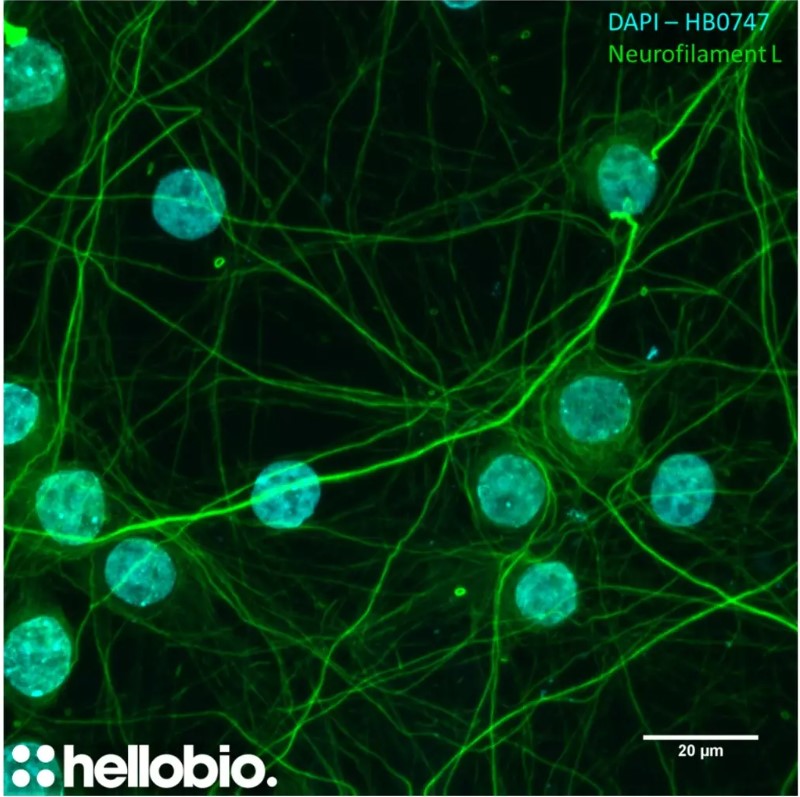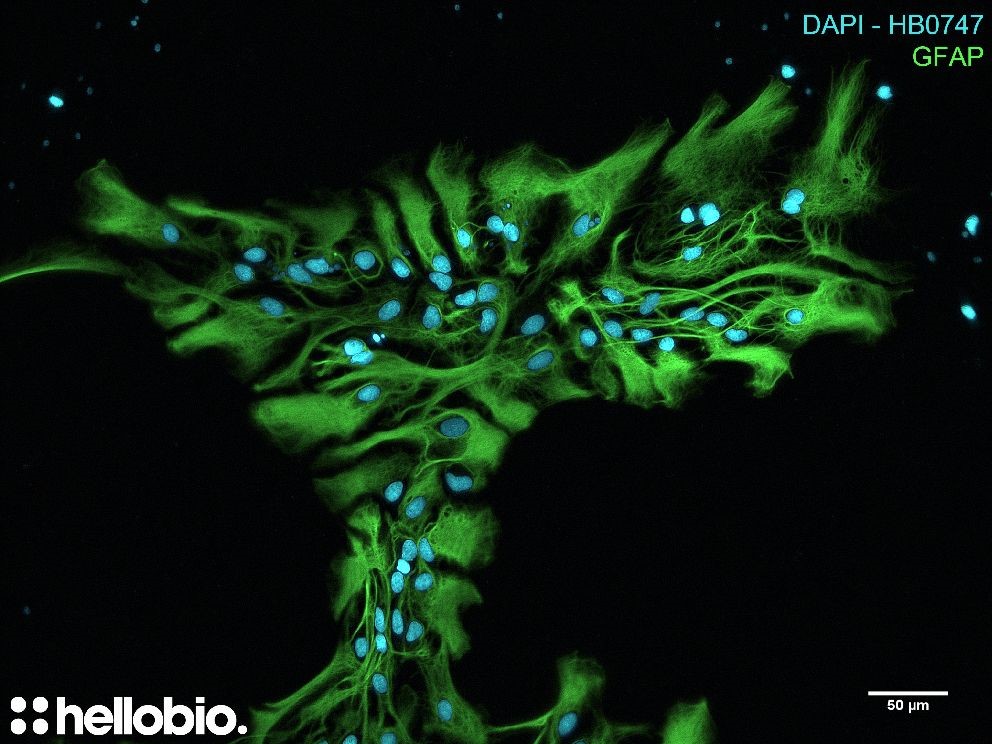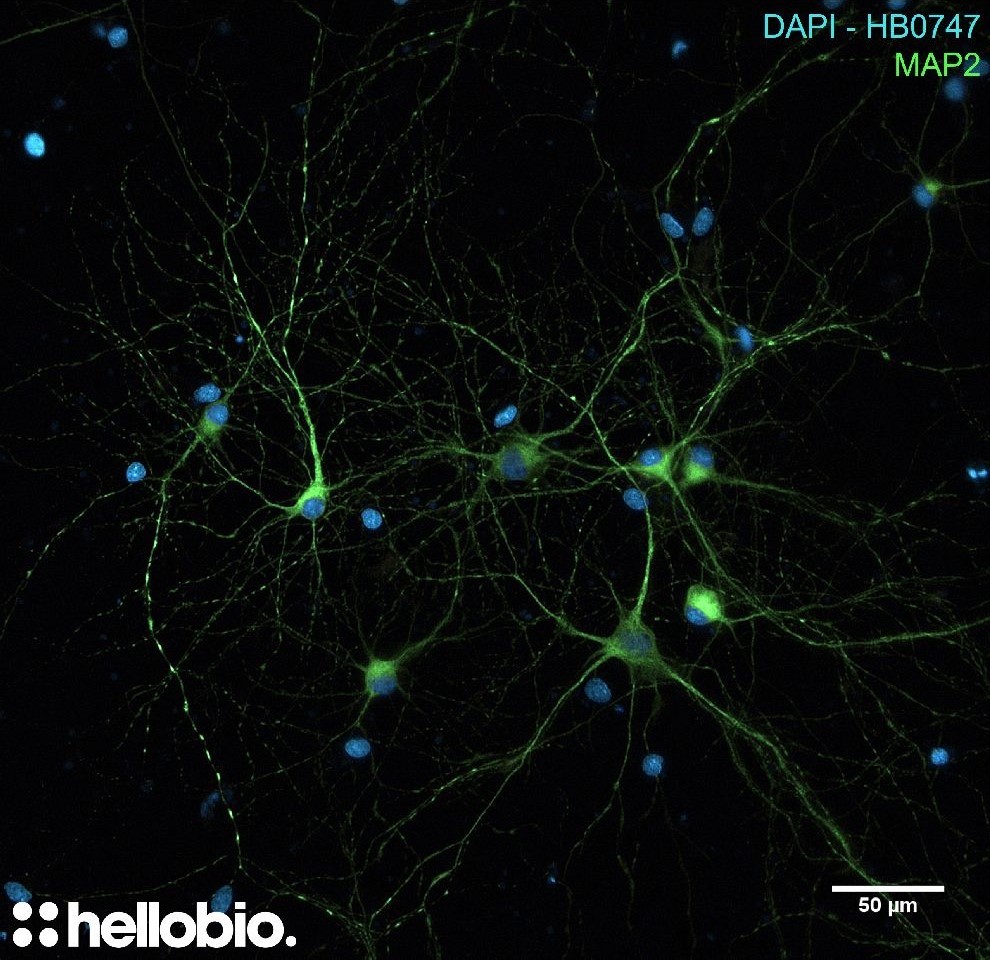DAPI Staining Solution (1mg/mL)
Certificate of Analysis
Product overview
| Name | DAPI Staining Solution (1mg/mL) |
| Biological description | Overview DAPI is a blue fluorescent DNA stain which is cell permeant at high concentrations. This is a ready made 1mg/mL staining solution. It is recommended to dilute this solution 1:1000 with your desired buffer for a 1µg/mL working concentration. 0.1µg/mL-10µg/mL is the typical working concentration used in most applications. DAPI also available. |
| Description | Blue fluorescent DNA stain. Nuclear counterstain. 1mg/mL staining solution in water. Solid also available in 10mg and 50mg packs. |
Images
Biological Data
| Application notes | Figure 1: Neurofilament L and DAPI co-staining in hippocampal cell culture. DAPI is a DNA binding dye commonly used to label cell nuclei in immunofluorescence experiments. DAPI from Hello Bio labels cell nuclei (blue) at 1µg/ml when co-stained with an anti-neurofilament L antibody (green). For protocol see #Protocol 1 in application notes below.
Figure 2: GFAP and DAPI co-staining in hippocampal cell culture. DAPI is a DNA binding dye commonly used to label cell nuclei in immunofluorescence experiments. DAPI from Hello Bio labels cell nuclei (blue) at 1µg/ml when co-stained with an anti-GFAP antibody (green). For protocol see #Protocol 1 in application notes below.
Figure 3: MAP2 and DAPI co-staining in hippocampal cell culture. DAPI is a DNA binding dye commonly used to label cell nuclei in immunofluorescence experiments. DAPI from Hello Bio labels cell nuclei (blue) at 1µg/ml when co-stained with an anti-MAP2 antibody (green). For protocol see #Protocol 1 in application notes below.
#Protocol 1: DAPI counterstaining of primary cultured neurones.
|
Solubility & Handling
| Storage instructions | -20°C |
| Handling | Aliquot DAPI ready made solutions and store at -20°C and avoid freeze thaw cycles. This compound is light sensitive; exposure to light may affect compound performance, we therefore recommend storing solutions in the dark and protecting from light. |
| Shipping Conditions | Stable for ambient temperature shipping. Follow storage instructions on receipt. |
| Important | This product is for RESEARCH USE ONLY and is not intended for therapeutic or diagnostic use. Not for human or veterinary use |
Chemical Data
| Chemical name | 4',6-Diamidino-2-phenylindole dihydrochloride |
| Molecular Formula | C16H15N5.2HCl |
| CAS Number | 28718-90-3 |
| Appearance | Pale yellow solution |
References for DAPI Staining Solution (1mg/mL)
-
DAPI: a DNA-specific fluorescent probe.
Kapuscinski J (1995) Biotech Histochem 70(5) : 220-33. -
DAPI: a DNA-specific fluorescent probe.
Kapuscinski et al (1995) Biotech Histochem 70(5) : 220-33. -
DAPI as a useful stain for nuclear quantitation.
Tarnowski et al (1991) Biotech Histochem 66(6) : 297-302








 Understanding purity and quality - a guide for life scientists
Understanding purity and quality - a guide for life scientists

